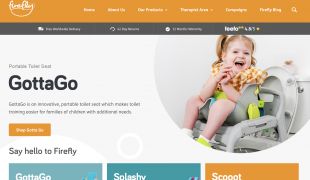- 9651
- 595
- 8
- 4
- 0
- Help Ukraine
About the solution
The device, called Tongue-Interface-Communication (TiC), consists of a sports mouthguard, which has five buttons and can be pressed with the tongue. This piece is connected via a Ethernet cable to a circuit board, which is linked to a computer with a USA cord.
Emma realized the technologies available on the market were either too expensive or not very efficient.
"It's easy to breathe too hard or look the wrong way, whereas my device uses deliberate tongue pressure," the inventor informed.
TiC, being an affordable product, it can help disable people to use a computer mouse in an efficient way. According to the student, the device be mass-produced for $10 a piece.
"I was just looking at the sort of assistive technology that's already on the market to help people like my friend Tim, and what I was noticing is that the majority of these devices are highly expensive and quite invasive," Emma affirmed.
The girl won the 2016 Weston Youth Innovation Award for her invention, getting a $2,000 prize. She will keep working on TiC, as she is trying to get it patented.
More info: http://bit.ly/2fUZIKf
Adapted from: http://bit.ly/29MRBxf
https://youtu.be/vl2PJ8Zof_A
We also want to get to know your solutions! Post them on Patient Innovation!
这些解决方案不应包括使用药物,化学品或生物制品(包括食品);创伤性设备;冒犯性的,商业或内在危险的内容。该解决方案未经医学验证。请谨慎进行!如果您有任何疑问,请咨询健康专家。
DISCLAIMER: This story was written by someone who is not the author of the solution, therefore please be advised that, although it was written with the utmost respect for the innovation and the innovator, there can be some incorrect statements. If you find any errors please contact the patient Innovation team via info@patient-innovation.com
-
-
395
-
0
-
5285

Dad combines devices to help disabled child use computers
COMMUNICATION: Communicating, whether by speaking, listening, or other means
Playing
Cerebral Palsy
Assistive Technology access
AI algorithm
Restoring mobility
Promoting self-management
Managing Neurological Disorders
Promoting inclusivity and social integration
Improving Speech and Communication
Preventing (Vaccination, Protection, Falls, Research/Mapping)
Raise awareness
Child and Adolescent Psychiatry
General and Family Medicine
Neurology
Pediatrics
Canada
-
-
-
566
-
0
-
9134

Eye controlled communication devices
COMMUNICATION: Communicating, whether by speaking, listening, or other means
CAREGIVING
Cerebral Palsy
Assistive Daily Life Device (to help ADL)
Assistive Technology access
Recovering cognitive function
Promoting self-management
Managing Neurological Disorders
Promoting inclusivity and social integration
Improving Speech and Communication
Neurology
Ophthalmology
Pediatrics
United States
-
-
-
241
-
0
-
2646

Collaborator James Leckey makes equipment to improve the quality of life and social inclusion of children with special needs
MOVING IN A WHEELCHAIR: Moving using a wheelchair.
BODY BALANCE: Maintaining body balance
STANDING UP: Standing up from a seated position
Playing
Neuromuscular Disorders
Assistive Daily Life Device (to help ADL)
Walking Aid (wheelchair/walker/crutches)
Assistive Technology access
5 Senses support devices: (glasses, hearing aids, headphones...)
Restoring mobility
Promoting self-management
Managing Neurological Disorders
Promoting inclusivity and social integration
Maintaining Balance and Mobility
Raise awareness
General and Family Medicine
Neurology
Orthopedics
Pediatrics
Physical Medicine and Rehabilitation
United States
-
 zh
zh